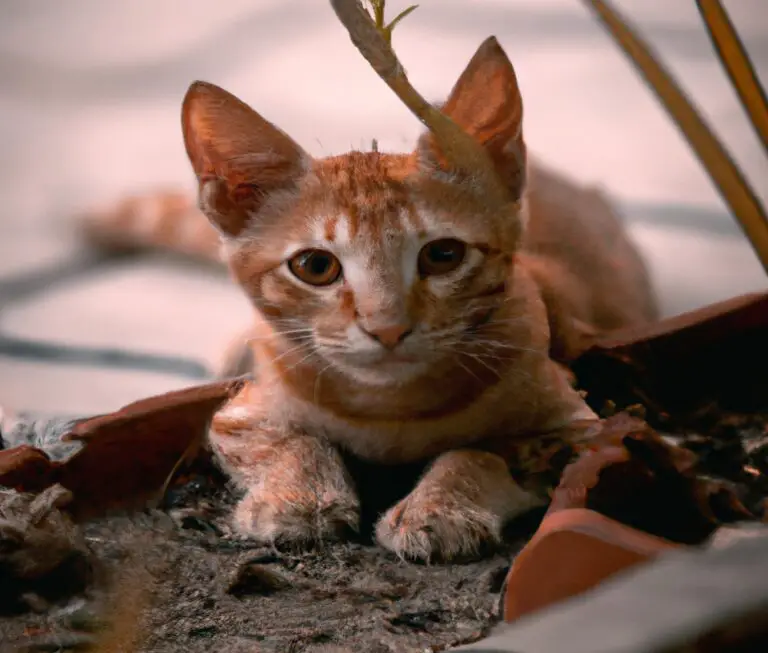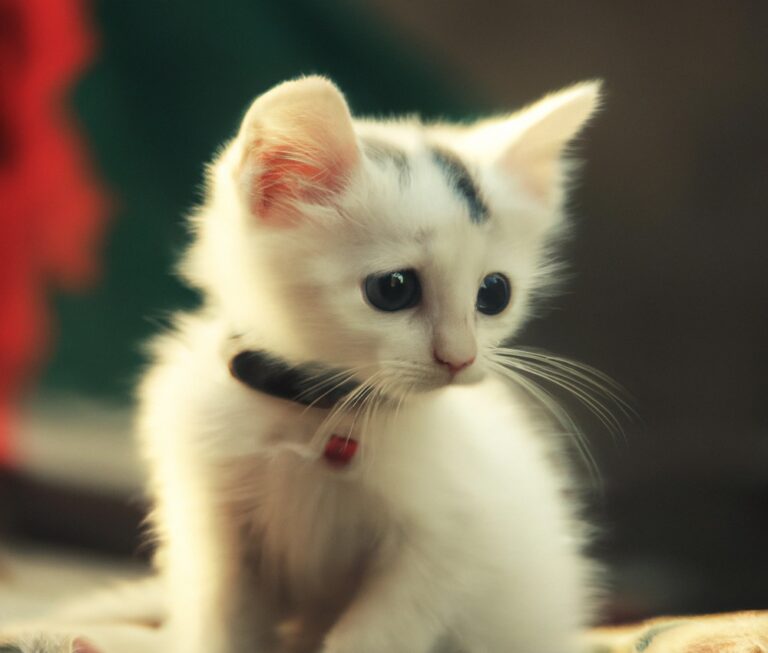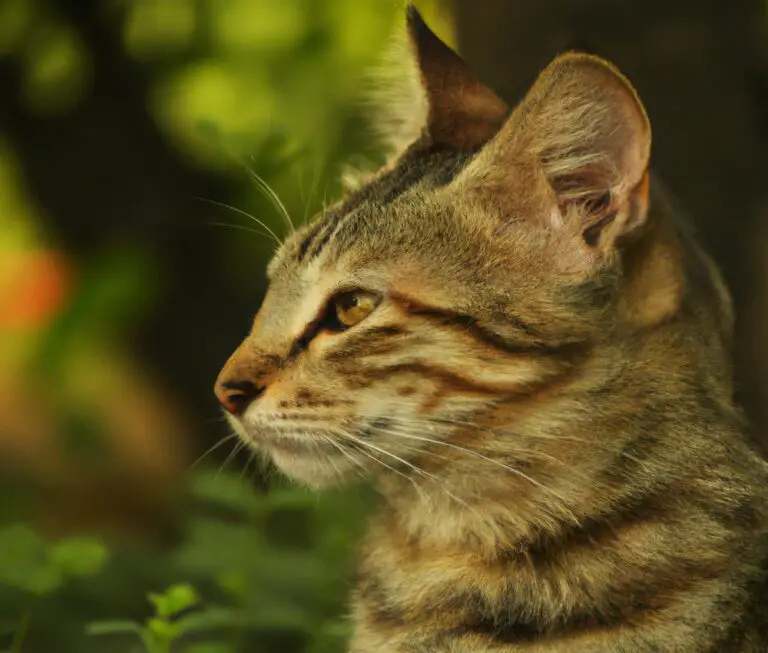Tips For Training Your Cat
Train your cat using positive reinforcement. Give treats or praise when they do something right. Start with simple behaviors like coming when called or sitting. Break down tasks into small steps. Be patient and consistent and keep training sessions short and fun.
Training my cat has been such an adventure! It wasn’t always easy, but it has been incredibly rewarding to see my cat learn new tricks and become more obedient. Through trial and error, I’ve picked up a few valuable tips and tricks that I’d like to share with you.
In this blog, I’ll be discussing the best strategies for training your cat. I’ll cover what rewards work best, how to use positive reinforcement, clicker training techniques, activities to keep your cat engaged, common mistakes to avoid, and preventive tips for behavioral problems.
What should you keep in mind when training your cat?
When training your cat, there are a few important things to keep in mind. First of all, cats are independent and intelligent creatures. They are not as easy to train as dogs, so you need to be patient and consistent. Secondly, positive reinforcement is key.
Reward your cat with treats or toys when they do something correctly. Also, use short, consistent training sessions. Cats have a short attention span, so it is best to keep your training sessions no longer than ten minutes.
Finally, remember to have fun. Training your cat should be an enjoyable experience for both you and your feline friend.
What are some tips for preventing behavioral problems in your cat?
If you want to make sure your cat is well-behaved and that you avoid any potential behavioral issues, there are a few tips you should keep in mind. Here are some of the best tips for preventing behavioral problems in your cat:
- Establish a routine: Cats thrive on consistency and routine, so create a predictable schedule for feeding, playing and grooming. This will help your cat feel comfortable and secure in their environment.
- Provide positive reinforcement: Reward your cat for good behavior with treats and positive words. This will let them know when they’ve done something right and will help reinforce good behaviors.
- Offer plenty of mental stimulation: Keep your cat mentally engaged with toys and interactive play. When a cat is bored, they may engage in destructive behaviors like scratching and chewing on furniture.
- Spay or neuter: By spaying or neutering your cat, you can help reduce the risk of behavioral problems related to hormones.
- Be patient: Training a cat can be a long process, so be patient and never punish your cat for making mistakes. Stick to positive reinforcement and reward good behavior instead.
- Consult a vet: If you’re still struggling with behavioral issues, don’t hesitate to consult a vet or an animal behaviorist for assistance. They may be able to provide additional tips and advice.
What types of rewards work best when training your cat?
When it comes to training your cat, rewards are essential. But what type of rewards work best? The answer is simple: it depends on your cat. Every cat is unique and has different preferences, so it’s important to pay close attention to what type of reward your cat responds to best.
One type of reward that often works well is food-based rewards. Cats are highly motivated by food, so giving a treat after your cat performs a desired behavior can be a great way to reinforce that behavior. However, be sure to not overfeed your cat; a few small pieces of a healthy treat is usually enough.
Another type of reward that works well with cats is verbal praise. Many cats respond well to hearing their owners’ voices, so speaking in a positive, upbeat tone and praising your cat after they perform a desired behavior can be an effective way to reinforce that behavior.
Finally, physical rewards such as strokes and cuddles may also work with cats. Some cats are more responsive to physical rewards than others, so experiment to see if your cat responds to them.
At the end of the day, the type of reward that works best when training your cat can depend on the individual. Pay close attention to the type of reward that your cat responds to best, and use it to reinforce desired behaviors.
How can you use positive reinforcement to train your cat?
Training your cat can sometimes seem like an intimidating task, but with the right tools and tips, you can make the process easier and more enjoyable. One great way to train your cat is by using positive reinforcement. Positive reinforcement is a powerful and effective tool that can help you train your cat in no time.
First, you’ll want to figure out what type of reward your cat enjoys most. Every cat is different, but common rewards can include treats, special cat toys, or verbal praise. Once you know what type of reward your cat likes best, you can use it to motivate your cat and reinforce the behavior that you’d like to see.
When you’re ready to get started with positive reinforcement, set up a consistent schedule and stick to it. Cats love routine and consistency, so having a regular schedule will help your cat understand what behavior you expect from them. Whenever your cat completes a task or shows the behavior you’d like to see, give them their reward. Over time, they’ll start to understand which behaviors are rewarded and will be more likely to repeat them in the future.
It’s also important to be patient and consistent when using positive reinforcement. Some cats may take longer to understand the process and respond to the rewards, but with patience and consistency, your cat will eventually learn the behaviors you’d like to see.
Using positive reinforcement is a great way to train your cat and reinforce the behaviors you’d like to see. With the right rewards, consistent schedule, and patience, you can help your cat learn quickly and easily.
How can you effectively use clicker training to train your cat?
Training your cat doesn’t have to be a chore! Clicker training is a great way to bond with your cat and teach them new habits, as well as reinforce positive behavior. Here are some tips on how you can use clicker training to train your cat:
- Start with a clicker and treats. Before you can start clicker training, you’ll need a clicker and some treats. Make sure to choose treats your cat likes, as this will help them focus on the task at hand.
- Set up a quiet area. Clicker training can be distracting for your cat, so it’s best to do it in a quiet area with minimal distractions.
- Reward good behavior. When your cat does something you like, click the clicker and give them a treat. This will help your cat learn that good behavior will be rewarded.
- Be consistent. Clicker training takes time and patience. Keep up the training and be consistent with the rewards.
- Have fun! Clicker training can be a great way to bond with your cat and have fun together.
What types of activities can you use to keep your cat engaged while training?
When it comes to training your cat, keeping them engaged is essential. Fortunately, there are plenty of activities you can use to keep your cat active and focused during training time.
One activity that cats love is chasing a laser pointer. Simply move the laser pointer around the room, and watch as your cat chases it. This not only helps you to keep your cat engaged, but it also promotes exercise.
Another activity to keep your cat engaged is to set up a fishing pole toy. This type of toy has a long pole with a small string and feather or toy attached to the end, which your cat will love to chase. You can even play a game of “catch” with your cat, and reward them with a treat when they catch the toy.
Treats are always a great way to keep your cat engaged while training. Try using small treats that can be easily consumed, or try using a treat puzzle toy. These toys have small compartments that your cat needs to open in order to retrieve the treats. This keeps your cat engaged as they figure out how to get the treats.
Finally, interactive games are a great way to keep your cat engaged during training. Try playing hide and seek, or hide treats around the house and let your cat find them. These activities will help to keep your cat’s mind stimulated and engaged.
By trying out these activities, you’ll be able to keep your cat engaged and motivated during training time. Your cat will love the variety of activities and treats, and you’ll be able to enjoy the results as your cat learns new behaviors.
What common mistakes should you avoid when training your cat?
Training your cat doesn’t have to be a chore. With the right approach and lots of patience, your cat can learn a variety of tasks and behaviors. However, there are a few common mistakes you should avoid when training your cat.
First of all, never punish your cat. Cats do not respond well to physical or verbal punishment and it can actually make the training process harder. Instead, use positive reinforcement techniques like treats or verbal praise to reward your cat for good behavior.
Another mistake to avoid is trying to train your cat for too long at once. Cats can get easily distracted and may become overwhelmed if you try to train them for too long. Break your training sessions into shorter chunks and take frequent breaks.
Finally, try to stay consistent with the training. Cats learn best when they have a consistent routine and when the same rules are enforced every time. Keep your training sessions short and consistent, and always reward your cat for good behavior.
With these tips in mind, you can be sure to have a successful training experience with your cat. Just remember to be patient, use positive reinforcement, and stay consistent with the training.

Frequently Asked Questions
What positive reinforcement techniques should i use for training my cat?
Positive reinforcement is an effective and humane way to train your cat. Try rewarding desirable behavior with treats, praised, or petting. When your cat behaves in an undesired way, ignore it or provide a distraction. Be consistent with rewards and punishments, and use a calm and gentle tone when speaking to your cat.
How can i keep my cat engaged during the training process?
To keep your cat engaged during training, make the process fun and rewarding for them. Use positive reinforcement such as treats or catnip to reward your cat for good behavior. Keep training sessions short and positive, and focus on teaching specific behaviors. Encourage playtime between sessions and make sure to give your cat plenty of love and attention.
How can i ensure my cat learns the training commands quickly?
One key way to ensure your cat learns the training commands quickly is to keep the sessions short and fun. Reward them with treats and positive verbal reinforcement right away when they get it right. Repeat commands and reward them for their successes. Make sure your cat is relaxed and in an environment they are familiar with.
What are some creative ideas for rewarding my cat for good behavior?
Rewarding your cat for good behavior is an important step in training them. Some creative ideas for rewarding your cat include giving them a treat, providing extra attention and petting, playing with their favorite toy, and giving them a special spot to sleep in. You can also offer verbal praise and even give them extra love and cuddles. When rewarding your cat, always use positive reinforcement to encourage and reinforce good behavior.







